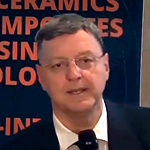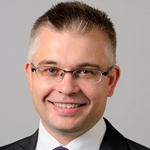Final Conference
About the event
The symposium will highlight the most important achievements in the CEM-WAVE project, covering such topics as ceramic fibre coating and preforms manufacturing routes, joining technologies for complex CMC components, upgrading the MW-CVI process with the latest MW Solid-State Generators (SSGs) to automate the technology, characterising the thermo-mechanical and corrosion resistance of CMCs in relevant environments and numerical modelling of the MW-CVI process for optimising processing parameters and scale-up.
Scuola di Ingegneria
L.go Lucio Lazzarino, 1, 56122 Pisa, IT
Did You Miss the Final Conference?
No worries! You can now access each speaker's presentation below. The Final Conference, held in Pisa, Italy, aimed to showcase the results of the CEM-WAVE project and spark discussions among stakeholders. This event provided a platform to build professional relationships and inspire new research ideas to advance Europe's energy transition.
If you are interested in attending the event in person or online, please register via the link.

Dr. Marco Orlandi
25 years of innovation in carbon-ceramic materials for brake disc applications. A deep dive into the evolution of ceramic-matrix composites fabrication
Carbon Fiber Ceramic Matrix Composites (CMCs) are the most promise materials for the development of brake systems for automotive applications both for racing and road use.
Twenty-five years of development to transform three patents in a sound production of carbon ceramic brake system will be presented in this contribution. The three different production process on use in BSCCB (Brembo SGL Carbon Ceramic Brakes) to obtain the three brakes families, named CCM, CCB and CCW, will be illustrated to give the status of the art of the industrial production of brake discs. The request coming from the market for the current vehicles and for the new challenges will be described to emphasize which are the most important features that car makers are looking for, and as the carbon ceramic discs can match their needs.
Organization: Brembo SGL Carbon Ceramic Brakes.
Marco Orlandi graduated in 1992 as industrial chemist at the University of Milano with a research focused on development and characterization of the Zirconium Oxides for ceramic application.After 6 years of experiences in an Italian technical ceramic enterprise (Bettini S.p.A.) where he learned how to develop advanced ceramic material like Carbide (boron and silicon), Nitride (silicon and aluminium) and Oxide (zirconium and aluminium) especially for mechanical application, he started in 2000 the challenge of Carbon Fiber Ceramic Matrix materials.
Currently he is the Material and Friction Manager of the world leader Carbon Ceramic Brakes manufacturer (BSCCB) having the responsibility of both production plant in Stezzano (I) and Meitingen (D).
His research activity is mainly focused on process development and material improvement (to catch the requests of capacity increase and cost reduction) and new technology introduction.
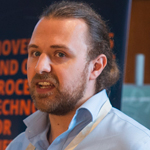
Dr. Michael Farnham
With a BSc in Physics from the University of Strathclyde and MSc in Advanced Materials at Cranfield University, my current role is senior scientist within ATL's research and development team. I have 7 years of experience in CVD and CVI processing of various materials, with specialisms in CMC fibre coatings and MOCVD. I have particular interest in applying these technologies to extreme, high temperature applications such as nuclear fission, fusion and aerospace.
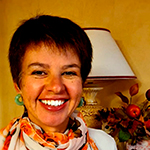
Prof. Valentina Casalegno
Development of joining and surface engineering techniques for ceramics and composites under extreme environment
In the steel-making industry, Ceramic Matrix Composites (CMCs) offer enhanced performance and energy efficiency, due to their exceptional thermo-mechanical properties, corrosion resistance, and lightweight nature. Specifically, they can replace Inconel/stainless steel alloys in radiant tube furnaces. For the manufacturing of these CMC-based radiant tubes, it is necessary to develop a suitable joining technique. However, achieving robust and reliable brazed connections in CMCs remains a challenge due to their inherent characteristics, including low wettability and chemical inertness. The experimental activity presented in this work is focused on surface engineering processes for CMCs and on the study and development of new joining materials and processes for oxide-based (Al2O3f /Al2O3-ZrO2) and non oxide (SiC/SiC) CMCs for the production of radiant tubes in steel making industry. New glass-ceramic systems and high- entropy brazing alloys have been tested as joining materials, considering several parameters (high in-service joint T, no degradation during service life, compatibility with harsh environments, pressureless joining technologies). Morphological analyses,flame tests and mechanical characterization by single-lap off-set tests were used to characterise the obtained joints.
Organization: Department of applied science and technology Politecnico di Torino
Valentina Casalegno completed her PhD in Materials Science and Technology in 2006 at Politecnico di Torino (Italy), where she continued her research activity mainly focused on joining of materials and where she is now Associate Professor of Materials Science and Technology. Her research activity has been mostly dedicated to design, fabrication and characterization of joining materials and joints for advanced ceramic composites and ceramic/metal components. She is also working on developing, characterization and testing of materials ("custom" glasses, glass-ceramics and their composites) for extreme applications and energy production (aerospace, automotive and nuclear application). She is part of a team (GLANCE (Glasses, Ceramics and Composites), composites.polito.it within the Institute of Materials Physics and Engineering at DISAT (Department of Applied Science and Technology) of Politecnico di Torino, that aims at fostering high level research in Materials Science and Engineering through the participation to several projects and the cooperation with the most qualified international research centers and companies. Valentina Casalegno is member of The American Ceramic Society-Engineering Ceramic Division and member of Italy Chapter of the American Ceramic Society.
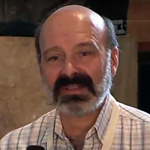
Prof. Gérard L. Vignoles
Why and how Micro-Wave Chemical Vapor Infiltration and other Thermal-Gradient Chemical Vapor Infiltration techniques can achieve optimal Ceramic-matrix Composites fabrication
The use of thermal gradients, for instance using microwave heating, allows in principle to overcome the heaviest shortcoming of Chemical Vapor Infiltration: the phenomenon of premature pore plugging. However, so far, it has been a challenge to identify the correct processing conditions in which the benefit of the thermal gradient is fully exploited. This contribution proposes, based on the multi-physics models developed during the CEM-WAVE project, to discuss the effect of the main processing parameters on the possibility to achieve an optimally dense composite within a reasonable time.
Organization: Université de Bordeaux, CNRS, CEA, Safran: Lab. for ThermoStructural Composites, LCTS
Gerard L. Vignoles, 58, graduated from Ecole Normale Supérieure (rue d’Ulm, Paris), is a Professor of the University of Bordeaux, head of LCTS (Lab for ThermoStructural Composites, a joint unit with CNRS, CEA and the Safran Group) and of the CNRS National Research Group GDR “Ceramic-Matrix Composites: Characterization, Modeling, Conception (CMC)2”. He is Editor of the Journal of the European Ceramic Society and Fellow of the American Ceramic Society. His activity mostly covers image-based physicochemical modelling of the fabrication and behavior in use of thermo-structural composite materials, supervising and co-supervising many industry-funded PhDs (31 + 2 under way). He led the MW-CVI modelling activity included in WP5 of CEM-WAVE.
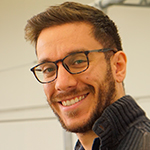
Dr. Roberto D'Ambrosio
Challenges of MW-CVI production of large SiC-based CMCs for energy-intensive industries
The research and development of simpler, economic and more efficient manufacturing technologies to yield rapid and complete densification of Ceramic Matrix Composites (CMCs) are fundamental for a wider application of these materials. In the framework of the EU CEM-WAVE project, an improved Microwave-assisted Chemical Vapor Infiltration (MW-CVI) process, based on multifrequency solid-state sources excitation, has been implemented for the densification of large SiC/SiC preforms with different geometries. In this contribution, the practical implementation and validation of the proposed technique will be illustrated emphasizing on the influence of the parameters allowing for the tailored densification of SiC-based CMCs to be applied as candidates for radiant-tube furnaces for steelmaking applications.
Organization: CNR-IPCF
Dr. Roberto D’Ambrosio trained as a chemical engineer at the University of Pisa gaining then his Ph.D. in industrial engineering in 2021 with a research focused on the production of Ceramic Matrix Composites (CMCs) using non-conventional energy sources. He is currently a Junior Researcher at the Institute for Chemical and Physical processes (IPCF) of the National Research Council (CNR) in Pisa. His research activity is mainly focused on the design and modelling of high-temperature microwave-assisted cavities and Silicon Carbide (SiC) based CMCs production by Microwave-assisted Chemical Vapor Infiltration (MW-CVI) process. He actively supported the coordination of the EU CEM-WAVE project and led the research activities, along WP3, related to the MW-CVI production of SiCf/SiC composites with different geometries.
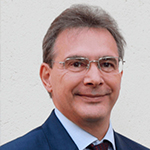
Prof. Paolo Colombo
Paolo Colombo is a professor of Materials Science and Technology at the Department of Industrial Engineering, University of Padova, Padova, Italy. He graduated from the University of Padova with a degree in chemical engineering in 1985 and a diploma in Glass Engineering in 1988. He was an assistant professor at the University of Padova from 1990 to 1998 and then an associate professor at the University of Bologna, until 2005.
He is also an adjunct professor of Materials Science and Engineering at the Pennsylvania State University, and an honorary professor in the Department of Mechanical Engineering of University College London, UK. He was a Foreign Scientist at INSA, Lyon, France in 2015, a DGF Mercator Professor at the Technical University Bergakademie Freiberg, Germany in 2016, an Academic Advisor at the Institute for Advanced Ceramics, School of Materials Science and Engineering, Harbin Institute of Technology, China in 2022/23 and a Visiting Professor at the University of São Paulo, Brazil in 2024.
He was elected Academician of the World Academy of Ceramics (2006), Academician of the European Academy of Sciences (2016), Academician (Member) of the Academia Europaea (2024), Academician of the Italian Academy of Engineering and Technology (2024), Fellow of the American Ceramic Society (2010), Fellow of the Institute of Materials, Minerals and Mining (2011), Fellow of the European Ceramic Society (2017). He was awarded a Fulbright Scholarship for the Pennsylvania State University in 1991, the Pfeil Award (The Institute of Materials, Minerals and Mining, London, UK) in 2007, the Global Star Award (The Engineering Ceramics Division of the American Ceramic Society) in 2010, the Edward C. Henry Award (The Electronics Division of The American Ceramic Society) in 2011, the Verulam Medal & Prize (The Institute of Materials, Minerals and Mining, London, UK) in 2013, the Global Ambassador Award (The American Ceramic Society) in 2016, the Polish Ceramic Society Award in 2019, the Bridge Building Award (The Engineering Ceramics Division of the American Ceramic Society) in 2023, and the ECerS-ACerS Joint Award (European Ceramic Society-American Ceramic Society) in 2024.
He is President of the International Ceramic Federation (ICF) and Vice President of the Italian Ceramic Society (2024-2026). He is also a member of the JECS Trust, an officer of the Materials Science Division of the European Academy of Sciences, a member of the EPSRC Peer Review College, and is serving in several committees in International Societies.
He published more than 350 papers in peer-reviewed journals, 9 book chapters and holds 10 international patents. h index (accessed 28/06/2024): Google Scholar = 76; Citations = 23418; Scopus = 68; Citations = 17950; WOS = 62; Citations = 14903. He is co-editor of a book on cellular ceramics, a book on polymer-derived-ceramics, 11 proceedings books and guest editor of 10 Special issues in international scientific journals. He is Editor-in-Chief of Open Ceramics (Elsevier), and is on the editorial board of 10 international scientific journals has co-organized several international conferences, and has given numerous invited talks in the field of porous ceramics, polymer-derived-ceramics and additive manufacturing of ceramics. He was chair of the XVI conference of the European Ceramic Society (Turin, Italy, 16-20/6/2019).
Paolo Colombo’s research interests include novel processing routes to architected glasses and ceramics (currently focusing mainly on Additive Manufacturing, using different technologies), the development of ceramic components from preceramic polymers and geopolymers, and the upcycling of industrial and natural waste.
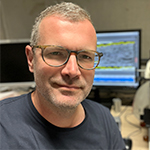
Dr. Alexander Konschak
Tailoring Adapted Ceramic Fibre Preforms by Wet Filament Winding Process
The research and development of simpler, economic and more efficient manufacturing technologies to yield rapid and complete densification of Ceramic Matrix Composites (CMCs) are fundamental for a wider industrial high temperature application of these materials. In the framework of the EU CEM-WAVE project, a new way of densification of
large porous SiC/SiC preforms was proved to manufacture cost efficient CMCs.
However ceramic fibre reinforced porous preforms were needed first and wet-filament winding process achieved here viable and reproducible CMC tubes for both oxide Al2O3 fibres on the one hand and non oxide SiC-fibres on the other hand as well. A Wet-chemical coating process was approved in addition for BN/SiC on SiC fibres and AlPO4 on Al2O3 fibres to form the interface to the CMC matrix. A YAS surface coating for high temperature stability of the SiC/SiC material in the final high temperature application show in addition good adhesion to CMC substrates.
Organization: Fraunhofer Institute for Silicate Research ISC
Dr. Alexander Konschak trained as a geologist at the Technical University Bergakademie of Freiberg gaining at the Bavarian Geoinstitute Bayreuth his Ph.D. in experimental petrology (CO2 solubility in silicate melts) in 2009 entering immediately Fraunhofer ISC/HTL in Bayreuth with applied research focusing now for more than 15 years on fibre reinforced Ceramic Matrix Composites (CMCs). Beginning with Carbon fibre reinforced CMCs his research activity mainly focus for more than 5 years on the development of new SiC-fibre reinforced SiC Matrix Composites (SiC/SiC).
He actively supported the EU CEM-WAVE project by his work in coordination, active manufacturing and investigation activities including for example using non-destructive testing (NDT) method such as computed tomography (CT) of both non oxide and oxide porous preforms and their coatings in different manufacturing stages and at different locations at Fraunhofer for the CEMWAVE research on MW-CVI production of SiCf/SiC composites with different geometries as well as back up CMC materials aiming to illustrate the high potential of CMCs in industrial high temperature applications.



